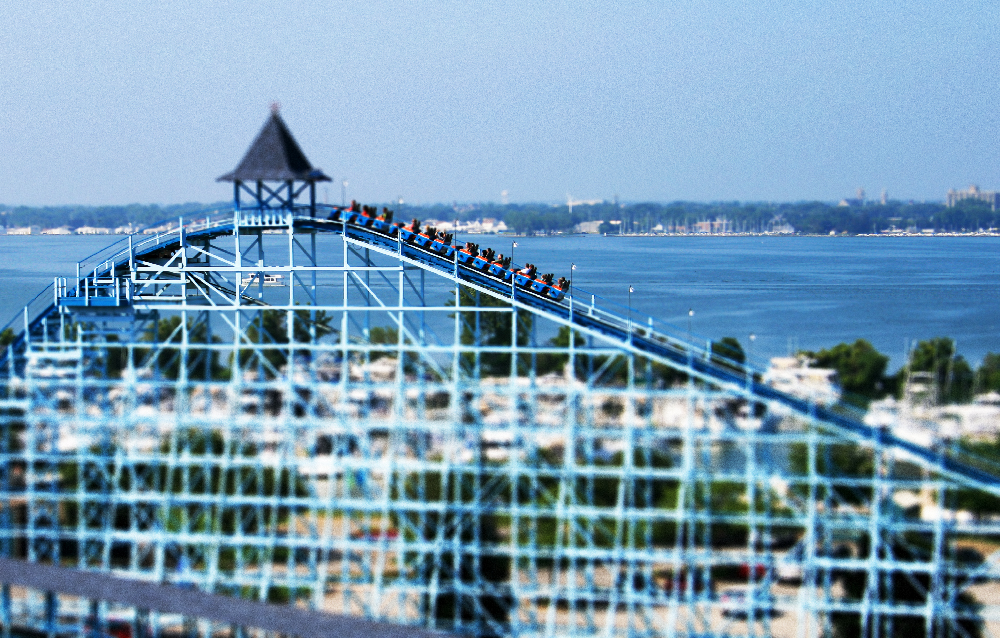Welcome to Iowa!
Sometimes I come across random bits of theming while I’m travelling. Sites which weren’t on my agenda that I just stumble into. Thematic design is so widespread at this point that it’s no longer confined to theme parks, the hospitality industry, or dining and retail. The genre now includes… visitor centers.
The Top of Iowa Welcome Center is on the outer edge of Northwood, the first city across the state line from Minnesota. The complex appears much more sprawling in this satellite view than the view from I-35.
But then I spied this massive water tower and sign advertising a casino, so I pulled off.
And I’m glad I did! Honoring the state’s agricultural roots in the the heart of the Corn Belt, “Top of Iowa” is designed as a massive red barn. There are some modernist touches, as well as a more contemporary, industrial-grade roof treatment, but this is still a thematic structure. A child could identify it from “The Farmer in the Dell.”
Barns inside of barns! This was a kind of Matryoshka (Russian nesting dolls) experience. A large red barn with smaller red barns inside. These smaller ones were more traditional, paneled wood with the requisite white X’s and trims. The interior walls of the large barn were stained yet unpainted. It was all sort of surreal.
One of the inner barns was labeled, incongruously for the region, the “Coffee Shoppe.” I saw this at my prior stop, Valleyfair, so maybe the New England-style colonial spelling is more prevalent in the Midwest than I thought? The smallest of the nested barns I found was the small U.S. mailbox on the reception desk. Quite cute.
But the barn motif didn’t end at the visitors center. Across the parking lot, the Diamond Jo Casino continues the theme, and adds to it.
Wisely, the designers positioned the casino’s red barn structure at the corner of the complex which is closest to the Top of Iowa Welcome Center barn. Diamond Jo’s barn is more traditional, just like the smaller ones nested inside the visitors center—red paneled wood with white trimmings. I particularly like the faux address of 777 for jackpot.
The rest of the casino complex is vaguely designed as a loose collage of Western Frontier forms. I was impressed with the attention to detail paid to the layout (casino theming can be rather hit or miss). Much like the work Disney does, the multi-building facility appears to have been cobbled together organically over time, rather than designed and constructed in place. There is a diversity of architectural styles, roof treatments, materials, and a wealth of faux aging, distress, and rust.
The “Big Wheel Bar” even features a working water wheel.
I was disappointed that I had to press on and couldn’t spend time exploring the interior spaces of the Diamond Jo. But I’m glad I stopped, if only for a moment. You never know what kind of thematic design you’re going to run into on the interstate.




















